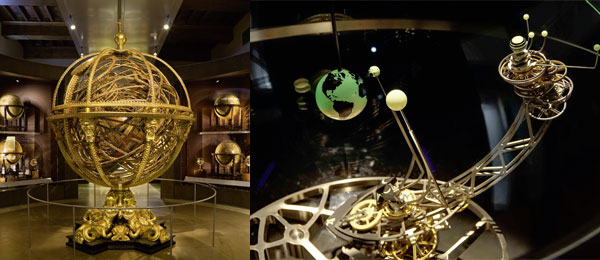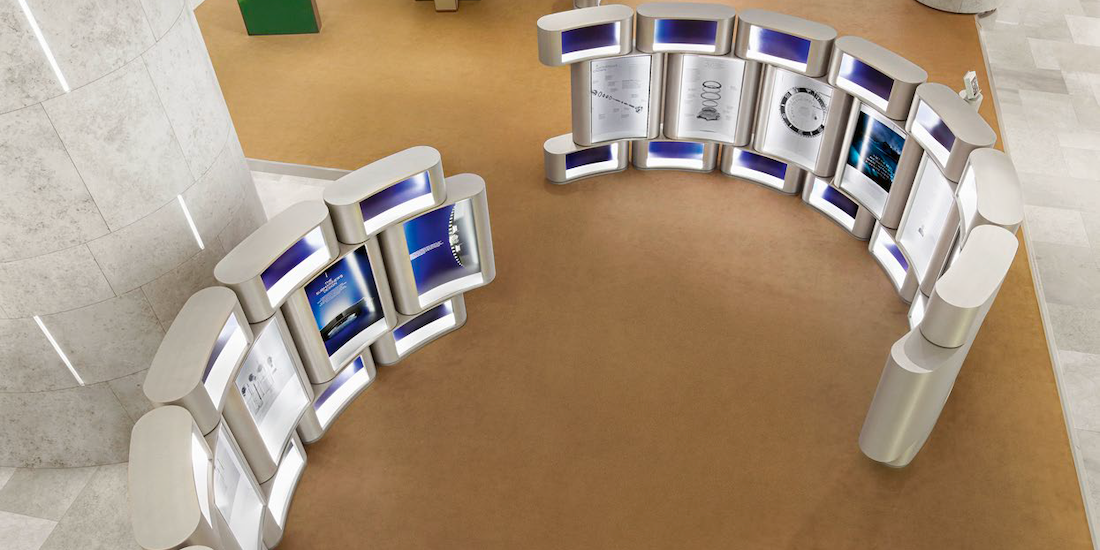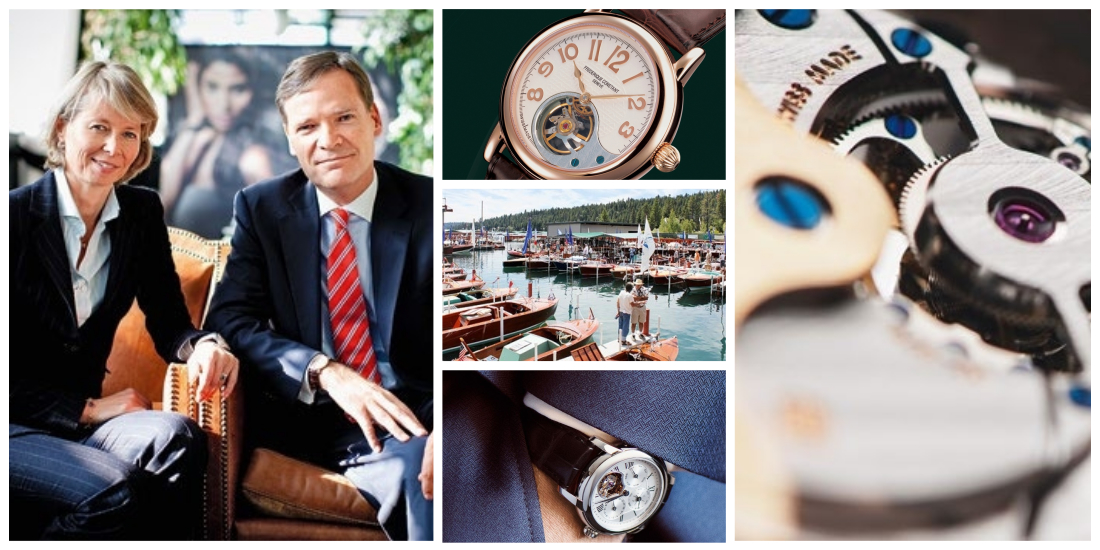
Jupiterium Panerai (1532 parts)
Planetarium cklock with perpetual calendar in geocentric perspective (as in Galileo’s time) indicating the positions of the sun, moon and Jupiter as well as the Medici planets in the night sky (at the time, the four principal satellites of Jupiter, henceforth called Lo, Europa, Ganymede and Callisto), observed for the first time by Galileo in 1610 thanks to the invention of the telescope. Activated by a regulated movement like that in the clock, all the celestial bodies, with the exception of the earth, move inside the celestial sphere, travelling through their orbit in real time. The moon revolves around the earth in 29,53 days; the sun completes a revolution in 365,26 days ; Jupiter completes a revolution around the sun in 11,87 years, while its satellites make their orbit in 1.8 (Lo), 3.6 (Europe), 7.2 (Callisto), and 16.7 (Ganymede) days respectively.
A reference
Like timepieces whose decoration is just as complex as their watchmaking content, the Museo Galileo combines an 11th century setting, the Palazzo Castellani, which houses some 3500 m2 of ancestral know-how, with an internationally open mind and exemplary spirit of sharing. Its documentation centre and state of the art research in the realm of science and technical history not only makes over 170,000 volumes in its library available to researchers all over the world, but also gives internet users access to a large collection of digital works, which were consulted by a million visitors in 2011. The exhibition reflects ultramodern principles of museum conceptualisation, juxtaposing historical and scientific rigour, conservation needs, communication strategy (notably in the highly educational interactive section) and refined design. A year after its birth, the Museo Galileo was awarded the Museum of the Year prize in Italy (in the best management category), as well as the 2010 Great Exhibitions Competition awarded by the British Society for the History of Science, and the 2011 European Museum Academy Prize.
Galileo and the measuring of time
In collaboration with Panerai, the new interactive section of the museum provides a better understanding of the complex functioning of certain scientific instruments, notably for measuring time with the help of increasingly sophisticated mechanical devices. Through touch screens, mechanical models and collectors’ items activated by visitors at will, the three rooms in this section bring to light the fundamental role of Galileo’s discoveries in perfecting systems for measuring time. The first is dedicated to the movement of objects (time, distance and trajectories), another to antique watches including the spectacular reconstitution of the Orologio dei Pianeti, the astronomical watch that Lorenzo della Volpaia created in 1510 for Laurent de Medici, and the last room to Galileo’s research into time and space, notably in the realm of calculating longitude. Galileo tried to solve the problem by observing the movement of Jupiter’s satellites and by applying the pendulum to the mechanical watch to it. The operation of the pendulum clock is explained by an enlarged reproduction of the instrument for measuring time invented by Galileo and by a mechanical model that compares Galileo’s circular pendulum to the cycloidal pendulum. The operating principles of mechanical clocks are illustrated by large-scale escapement prototypes, which may be directly activated. Well worth a look at www.museogalileo.it.






